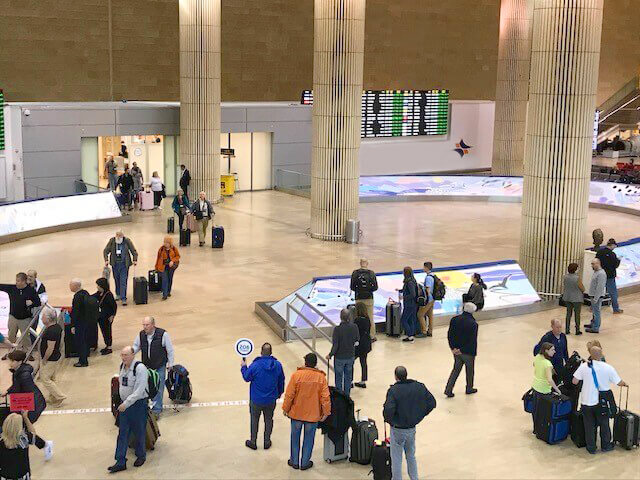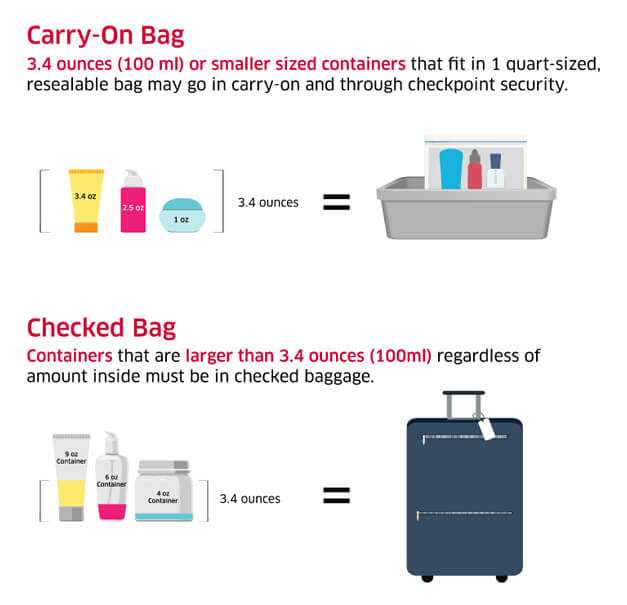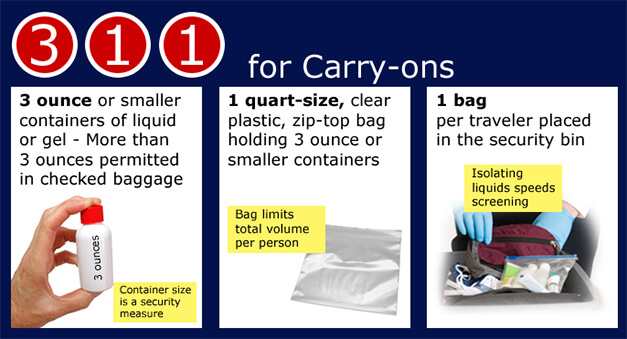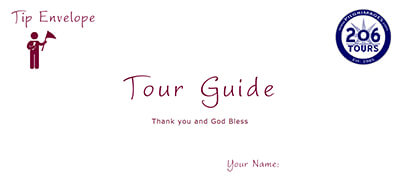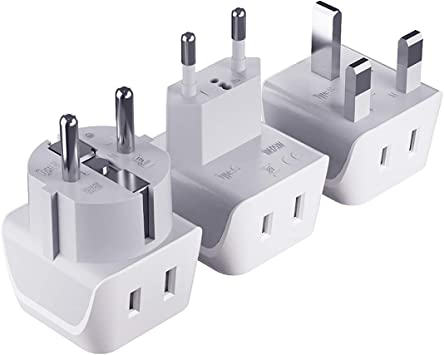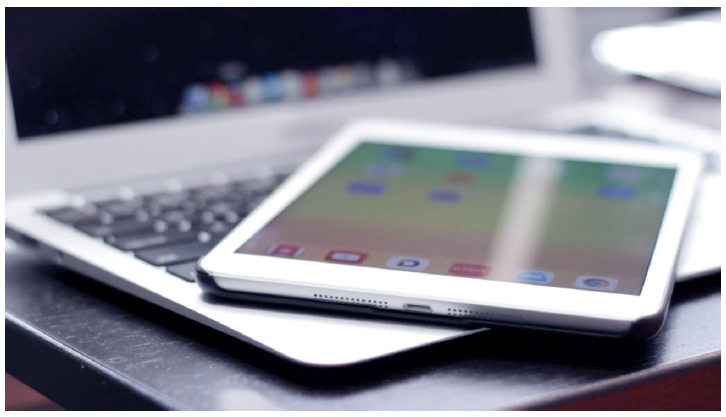What To Know Before You Go To
Portugal, Spain & France
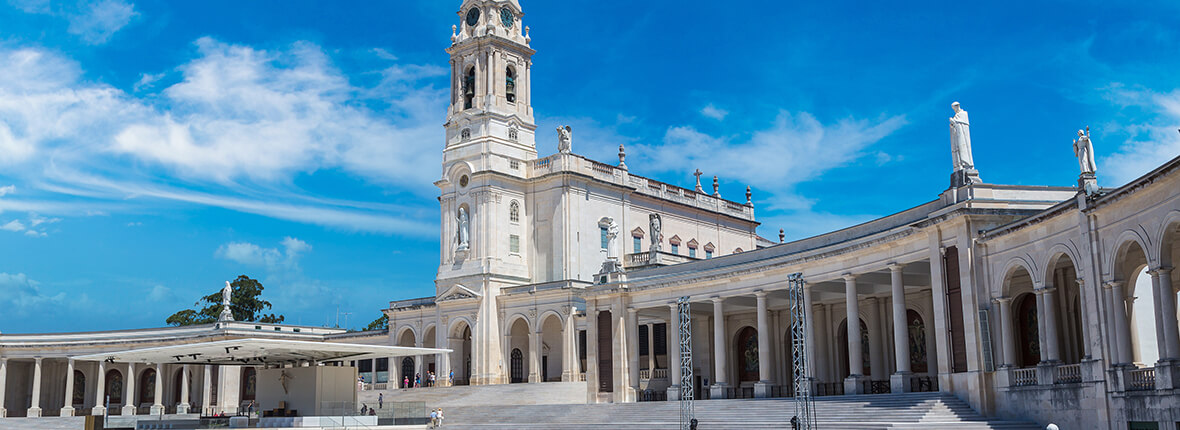
-
How to Prepare for your Pilgrimage
Thanks for visiting our Know Before You Go resources! Our mission at 206 Tours is to take care of all the logistics of your pilgrimage so that you can focus on preparing spiritually for a sanctifying experience! The information below details everything you need to know before going on your trip.
Do I need to know the local language?
Your tour guide will conduct the pilgrimage in English but is multilingual, so they are able to communicate to locals for you should you need any assistance.How can I prepare for my pilgrimage?
- Prepare Physically: If you are not accustomed to physical activity, begin walking 1-2 times a day. We recommend that pilgrims be able to walk up to 2 – 3 miles easily.
- Prepare Spiritually: Attend daily Mass if possible, or spend quiet time in Adoration. You can also begin (or continue) to pray the Rosary daily.
How should I raise questions/concerns during my pilgrimage?
If you need help during your pilgrimage, your guide is there to assist you at all times! Please communicate any problems, concerns, or complaints directly to your tour guide immediately so that they can best address your needs. Your guide is at your disposal to help with hotel accommodations, meals, transportation, and anything else you might need assistance with. There is little that can be done to rectify a concern once you return home, so please communicate any issues as soon as possible during the pilgrimage. Most concerns can be dealt with swiftly once brought to your guide’s attention. If you feel your tour guide does not adequately address your problem, please contact our office at sales@206tours.com -
General Info About Your Documents, Flights, Arrival & Travel
Please visit www.tsa.gov for the most up to date travel restrictions
Passports and Visas
206 Tours recommends that your PASSPORT is valid up to 6 months after your return flight.
If you have not yet obtained your passport, or just noticed that it will be valid 0 months after your return, URGENTLY contact your local passport office and apply for an expedited passport or passport renewal. A visa is not required for U.S. citizens to enter Portugal, Spain & France.
IMPORTANT: , Canadians, and Australians will need to apply online for travel authorization for Europe. This applies to all travelers, and all ages, and will cost a fee of approximately $9.00 per person. The program is called ETIAS. Some refer to it as a “visa for Europe.” It is not a traditional visa, and only needs basic details about the traveler and their trip. This process is done online, and an email address is required. Approval will usually be sent by email within one (1) hour, but it could be up to four (4) days. Once granted, it is valid for unlimited trips over three (3) years or until it expires. The length of stay in Europe for US tourists (90 days per every 180-day period) remains unchanged.
For those who hold a passport from a foreign country, please be advised that it is the passenger’s responsibility to reconfirm if any visas are required. Below please find embassy information on the country you will be visiting.
PLEASE NOTE: A valid passport is required, and it must be valid for at least 6 months after your return date. It is the traveler’s sole responsibility to obtain and have available when necessary the appropriate valid travel documents. All guests are advised to check with the appropriate government authority in each country visited to determine the necessary documents. At times, a hotel or cruise vessel may require you to hold your passport. When and if a visa or visa waiver is required, it is the passenger’s responsibility to obtain one. 206 Tours’ owner, agent, and employees cannot be held liable for clients not having proper passports, visa, visa waiver, or other travel documents. Cancellations due to a lack of appropriate documents will incur usual penalties. A passport card is not useful for international air travel. Attempting to use this instead of a passport book will result in a denial of boarding by the airlines and entry by the legal authorities.
Airport Check-In
Walk over to the designated airline check in counter. You must personally present your passport and your own luggage.
The agent will locate your reservation, give you the boarding pass and luggage slip is being sent via same flights.
(Unlike domestic flights you will not be able to print your boarding passes for international flights at home)
Ensure that your luggage is checked through all the way through to your final destination.
This will eliminate the need to claim your luggage between flights and re-check in before your connecting flight.Flight Changes/ Delays/ Cancellations: If your flight is experiencing a long delay, or a cancellation, do not panic, go to the airline customer service counter, or contact the airline, ask to be rebooked to another flight/airline, ask for meals or a hotel room.
Be Persistent. Speak with the kindest tone, but keep trying, do not just take “no” for an answer. Airlines will rebook you on the next flight to your final destination. Be Nice! Never yell or be rude to staff, as they are going through a lot and it is not their fault. You can take it out on CEO’s by writing a letter to particular airline’ customer service.
How early should I arrive at the airport?
- Domestic Travel: Arrive at least two (2) hours prior to flight
- International Travel: Arrive at least three (3) hours prior to flight
Airline Connections
Where is my flight itinerary?
206 Tours provides you with your flight itinerary via email as well as printed in your final documents package. This itinerary shows the airline, flight number, departure and arrival times, and seat/meal information. It is recommended to keep the printed copy with you or download the itinerary to your smartphone for easy reference.How are my flights arranged?
206 Tours books airline reservations in accordance with TSA rules, regulations & routings. We do our utmost to provide the most convenient flight schedule available. Pilgrims will be traveling independently on all flights.Why does my plane reservation say one airline, but the plane reads another?
Many airlines participate in special agreements to share aircrafts. For example, your ticket may show United Airlines as your carrier even though you are actually seated on a Lufthansa plane. These are called “codeshare” flights, and if applicable it will be shown on your itinerary in the following way: “Flight operated by (airline).”Who decides the connection time at airports?
The airlines determine the minimum connection time required to transfer from one gate to another for a connecting flight. 206 Tours does our best to provide ample connection time based on available flights and in accordance with our scheduled group transfers.Flight Delays & Arrival Transfers
What if my flight is delayed or canceled?
If your flight is delayed or canceled, you must work DIRECTLY with the airline agents at the airport to arrange for alternate flights. Once you check-in for your flights, 206 Tours can no longer make any adjustments to your flight itinerary. After check-in, changes can only be made by the airlines.In this scenario, please be persistent with the airline agent you are working with to rebook. Keep in mind that the situation is not the agent’s fault and try your best to remain calm and courteous to receive speedy assistance. Keep in mind that the airlines are not required to offer reimbursement for overnight stays when delays/cancellations occur due to weather. If you find that you are unable to receive adequate assistance from airline personnel, please contact the 206 Tours emergency line and we will do all we can to assist you remotely.
TIP: Once your airline has rebooked you, text/call your guide to advise them of your new arrival time so that transfer arrangements can be adjusted. Your guide’s phone number can be found in the digital confirmation email sent to you by your account manager.
What if I miss the group transfer upon arrival?
If you miss the group transfer to the hotel due to a flight delay, missed connection, or another reason, you may:- Take a taxi to the hotel at your own expense.
- Contact your guide and ask for 206 Tours to arrange a private transfer at an additional cost.
*Be sure to obtain a receipt of your transportation. Upon returning home, you may wish to seek reimbursement for the cost if the reason for missing the transfer was due to airline problems.
What if I want to make a last-minute change to my ticket?
If you would like to make changes to your airline ticket once it has already been issued, you MUST work DIRECTLY with the airlines. You will incur additional costs (a minimum of $400 per person) for such changes.Arrival Procedure
What do I do when my flight lands?
After deplaning, you will clear immigration and then proceed to baggage claim. Pay attention to the monitors above the conveyor belts in baggage claim. The conveyor that your bags will come out on will have monitors above it displaying your flight #. Once you collect your luggage, you will exit the baggage claim area through customs and into the arrivals hall/lounge. There, you will meet your guide/driver who will have a 206 Tours sign.Look for the “206 Tours” Sign!
In the arrivals hall, you will be greeted by a 206 Tours representative holding a “206 Tours” sign. They will escort you to your hotel where you will check-in and have time to refresh before meeting the rest of the group later in the day.TIP: If you do not see your guide/driver, look in that surrounding area (as they may have stepped back to assist another pilgrim). If you still cannot find them, contact your guide by utilizing the phone number provided in your final confirmation email.
Lost Luggage
If your luggage is missing, proceed to the baggage office to complete a missing luggage form. Please make sure to save all of the paperwork and tracking information given to you by the airline. Upon locating your baggage, the airlines will deliver the luggage to your hotel. It is very important that you provide them with the correct addresses of your hotels, as well as the dates that you will be staying at each of them (listed in your final confirmation email). You may also provide the airline with the phone number of your guide. If your baggage is delayed for more than 24 hours, and you purchased insurance, you may submit a claim upon your return to the US. This is only applicable to passengers that purchased travel insurance through 206 Tours.
*206 Tours strongly suggests that pilgrims carry one change of clothes in their carry-on luggage and their daily medications in their personal item.Apple AirTags
As you plan your trip, consider including Apple AirTags on your packing checklist. These compact, coin-sized devices act as personal tracking systems, offering a reliable solution to keep tabs on your luggage. Leveraging Apple’s vast Find My network, AirTags allow you to trace your belongings right from your iPhone, iPad, or Mac. They’re straightforward to use: simply attach an AirTag to your bag, and voila, your luggage is now traceable on a global scale. The device’s precision finding feature also provides visual and haptic feedback to guide you right to your misplaced or lost item, a feature especially useful in busy airports or hotels.
If you choose to utilize this tool, it’s essential to familiarize yourself with the functionality and limitations of the AirTags before you embark on your journey. While they offer an innovative way to track your belongings, they rely on being in range of devices in the Find My network to relay their location. This means their effectiveness could be limited in areas with low Apple device density or poor internet connectivity. Also, remember that AirTags are designed for tracking objects, not people or pets. A built-in anti-stalking feature notifies individuals if an unknown AirTag is moving with them, so using AirTags for unapproved purposes could lead to unintended alerts. With responsible use, Apple AirTags can add a layer of security and peace of mind to your travel experience.
If you do not have an apple device, consider one of these other tracking devices. These devices are also good to put on your carry-on, personal item, etc. in case you lose them.
How to Overcome Jet Lag
Traveling through time zones affects people differently. Some people get incredibly exhausted from the long flight and time change. Here are some suggestions that may help you beat jet lag:
- Pack for your trip at least two days ahead of time.
- Make sure to go to bed early the night prior to travel.
- Hydrate! Drink more water than usual to avoid dehydration on the flight. Being seated for long periods of time can be very hard on the body and can cause poor circulation and bloating. Hydration is key to preventing this.
- Try to sleep on the plane!
- Think in “Local Time” – reset your watch to the local time of your destination as soon as you board the flight. It may help to do this one day before travel, or even to slowly transition to local time a couple of days before travel if your schedule allows it.
- Stay busy – When you arrive at your destination, try to stay busy and go to bed at an appropriate time that night. Pacing is key!
- Eat fresh, healthy foods like vegetables, fruits, and protein to keep you alert. Heavy, greasy, or high-carb meals will make you more tired.
- Exercise – take a twenty-minute walk in the morning, stretch before getting on the plane, and get up and walk every now and then during the flight. Moving gets your blood flowing and allows your body to adjust to time changes easier. Make sure to keep moving when you get to your destination, as this will help you stay awake until nighttime.
- On the day of return, get out of bed earlier than normal, hydrate, and try to get sleep on the flight home. Reset your watch and start thinking in the local time of your home.
Baggage Regulations
How much luggage can I bring?
Your Pilgrimage Includes:- One (1) piece of checked luggage
- One (1) carry-on bag
- One (1) personal item
Checked luggage
The checked bag is the larger bag that contains the bulk of your belongings. Upon checking in at the airport, this is the bag that you give to the agent that gets stored underneath the plane. Your checked bag will be weighed at the counter, so make sure you weigh it at home and ensure it does not exceed the allowed weight. You can do this by weighing yourself alone, then weighing yourself while holding your bag, and subtracting the difference. Because your checked luggage will not be with you on the flight and could potentially get lost, do not pack daily medications or essential items (wallet, passport, etc.) in your checked bag.
Size Allowance:
- Length + Width + Height cannot exceed 62 inches/158cm
- Economy Class: One (1) Checked Bag at 50 lbs/23kg
- Business Class: Two (2) Checked Bags at 75 lbs/32kg
TIP: If you cannot pick it up, it is too heavy!
Carry-on Luggage
A carry-on bag is the bag you bring on the plane with you, which must fit in the overhead compartments. Airlines are strict about the size of a carry-on bag. If it is too large, you will be subject to fees. Always take vital personal possessions with you at all times, such as your passport, wallet, and medications. Do not pack these or other items that you cannot be without in your carry-on luggage, as it is possible that the airline may ask you to check your carry-on if they run out of overhead space.
Size Allowance:
- One (1) bag: Length + Width + Height cannot exceed 42 inches/106 cm
- The bag may not exceed 17 lbs (8kg)
TIP: Our 206 Tours bag meets the measurement requirements. Carrying one of our bags will also make it easy for the guide and/or driver to spot you in the arrivals hall.
Personal Item
- One (1) personal item is permitted in addition to your carry-on bag – this can be a laptop, iPad, book, small purse, etc. If you are unsure if your personal item fits the criteria, look up your airline’s particular guidelines for personal items.
Carry-on Bags: 3 – 1 – 1 Liquids Rule
For all liquids, gels, aerosols, creams, and pastes:- Each item must be 3.4 oz bottle or less (100 ml).
- All items must fit into one (1) quart-sized, clear, plastic, ziploc bag.
- Only one (1) ziploc bag is allowed per passenger. Each bag is screened on its own.
- Gallon-size bags or fold-over sandwich bags are not allowed.
For additional information/clarification please visit: www.faa.gov
Checked Bags:
Containers of any size are allowed in checked bags. Any container larger than 3.4 oz (100ml) must be in checked baggage, regardless of the amount of product inside.Exceptions to the Rule:
The following exceptions are permitted to exceed 100 ml:- Baby formula, breast milk, and juice for infants/toddlers.
- Prescriptions and over-the-counter medications including eye drops and saline drops.
- Water, juice, liquid, or gel nutrition for passengers with a doctor’s note.
- Mastectomy products, prosthetic breasts, bras containing gels/liquids, etc.
- Gels/frozen liquids that are required to keep medical items cool.
If you are traveling with any of the above items over 100 ml, you must declare the items for inspection at the security checkpoint. The TSA officers may need to see the items for additional screenings.
Any liquids purchased inside the airport after security are allowed on the airplane. However, if you have a layover and are re-screened before your connecting flight, the liquid rule will apply.
Personal Items Carry-on Checked All Make-up – You are allowed to carry any liquid/gel/cream makeup item provided that the container is up to 3 oz., as per the 3-1-1 rule. *mascara, chapstick, lip gloss, etc are all considered liquids. Yes Yes Safety Razors – includes disposable razors Yes Yes Saline Solution – You are allowed to carry up to 3 oz., as per the 3-1-1 rule. Volumes greater must be declared to the Security Officer. Yes Yes Tweezers, Scissors, Nail Clippers – plastic or metal with blunt tips or metal with pointed tips and blades shorter than four inches in length. Yes Yes Shampoos & Conditioners – must be in 3 oz. or smaller container inside your 1 qt Ziploc bag Yes Yes Toothpaste – 3 oz. or smaller container inside your 1 qt Ziploc bag Yes Yes Umbrellas– allowed in Carry-On baggage once they have been inspected to ensure that prohibited items are not concealed. Yes Yes Walking Canes – allowed in Carry-On baggage once they have been inspected to ensure that prohibited items are not concealed. Yes Yes Electronics Carry-on Checked Camera Equipment – the Checked Baggage Screening Equipment will damage undeveloped film in camera equipment. We recommend that you pack undeveloped film in your Carry-On baggage. Yes Yes Laptops, Smartphones & I-Pads Yes Yes Food & Drinks Carry-on Checked Beverages – from Home or purchased before reaching the Security Checkpoint in containers LARGER than 3 oz. No Yes Beverages – from Home or purchased before reaching the Security Checkpoint in a 3 oz. or smaller container and in your quart-size bag Yes Yes Beverages – purchased after Security Screening Yes Yes Medication, Baby Formula/Food, Breast Milk, & Juice – allowed in reasonable quantities exceeding 3 oz and are not required to be in the zip-top bag. Declare these items for inspection at the checkpoint Yes Yes Canned or Jarred Goods – such as soup, sauces, peanut butter, fruits, vegetables and jellies (3 oz. or smaller container) Yes Yes Cheese – in pressurized containers (3 oz. or smaller container) Yes Yes Duty-Free Alcohol and other items (some restrictions apply) Yes Yes -
Currency & Money
Currency
The Euro (EUR) is the currency of Portugal, Spain & France. For most current exchange rates please visit www.xe.com. This website provides “pure” exchange rates. Pure rates do not include bank fees.
Money
Bring small bills
Bring €50 cash in €1 Euro Bills
Bring €50 cash in €5 Euro BillsFor bathroom stops, to buy a candle, or to leave donations at churches. If you bring high denominations its hard to get change.
Where can I exchange money?
- Your Bank – Visit your bank before traveling for the best exchange rate
- Airports – there will be a convenience fee
- Major boulevards at the destination – there will be a small exchange fee
- ATM Machine – while in Portugal, Spain & France, an ATM machine is the most practical and cost-effective option. Utilizing your ATM card or debit card, you can also get cash advances on your credit card at an ATM, but there will be high fees.
How do ATM machines work in Europe?
ATM machines can be found at most bank branches, post offices, train stations, airports, shopping centers, etc. and are accessible 24 hours a day. Most banks charge a fee when you withdraw money, especially if it is from the network of another bank. You should ask your bank for information about where you can use your card and what fees are charged for withdrawing money. Most US banks apply a $2.00-$5.00 international ATM fee in addition to the ATM’s fee. Your bank will utilize an exchange rate that is a couple percent above the “true” exchange rate. Be sure to find out your daily withdrawal limit before you depart. If you have any questions about your ATM card, check with your bank before your departure. Ensure you know how to contact them if you encounter problems using your card. Use your card before you leave home and again shortly after arrival, even if you do not need the money, solely to verify that everything works.You can also get cash advances on your credit card at an ATM. Credit card companies try to protect themselves from theft by limiting the funds someone can withdraw outside their home country, so call your credit card company before you leave home. Keep in mind that you’ll pay interest from the moment of your withdrawal, even if you pay your monthly bills on time.
Can I use my credit card in Portugal, Spain & France?
Yes! We highly recommend using your credit card as it offers convenience, reasonable exchange rates, and security (you can cancel them if they are lost!). Visa and Mastercard are the best options, as they are accepted in most stores and restaurants. American Express and Discover are not widely accepted in Europe. Your guide can also advise you where the ATM machines with the lowest fees are located. Keep in mind that certain purchases (such as in Church gift shops, tipping on your own at restaurants, etc.) require cash.IMPORTANT: Before you leave, inform your bank and credit card companies that you will be traveling in Portugal, Spain & France so that they do not flag, block, or suspend your account due to international transactions.
NOTE: For increased security, European banks now issue debit and credit cards that carry an embedded chip. As a part of their anti-fraud measures, you are seldom asked to give a store/restaurant employee your card for them to swipe. Instead, if you are at a restaurant on your own, your waiter will bring a portable card reader to your table with the amount of your bill already entered. You cannot add a tip to the total, so leave a small tip in cash instead. Your card is swiped, and you will be asked to OK the total and enter a PIN. The PIN for this is not the cash back PIN. If you have an older US credit/debit card without a chip, you may not have a PIN. In the case that you do not have a PIN or forget it, just hit the OK again with no PIN entered. It usually works.
How much money should I bring?
This is totally subjective based on how much you’d like to spend on souvenirs and on the meals not included. Refer to the itinerary for your particular pilgrimage and budget how much money you would like to spend on these two things. Keep in mind how many meals you will be responsible for, and how much room you have in your luggage for souvenirs. Then utilize the exchange rate calculator above. We generally recommend you bring at least 100 Shekels/USD per person (keep 50 Shekels/USD with you and 50 Shekels/USD in your checked bag).TIP: Get your Euros in small bills, as it is harder to get change at churches and convenience stores if you pay in large bills.
How does tipping work?
Tips are an important part of earnings for your guides and bus drivers. While tips for provided meals, local guides, porters, etc. are included, tips to your 206 Tours guide and driver are not. Tips to your guide and driver are up to your discretion. Please use the tip envelopes provided with your travel documents.When do I give the guide/driver their tip envelopes?
We suggest you tip the tour guide and bus driver the day prior to your return. We provide labeled tip envelopes within your final documents package.How much should I give?
Tip according to your discretion and satisfaction level. Tipping in local currency is preferred. We recommend an amount per person/per day below.Do I tip the spiritual director?
This is not required, but some pilgrims choose to give a small gift or donation.Tips
Although you should tip according to your satisfaction level, the following amounts are recommended. The tip envelopes are included in your final documents package.
Tour guide in Portugal, Spain & France – €10.00 per person per day
Local currency is preferredBus Driver in Portugal, Spain & France – €5.00 per person per day
Local currency is preferredSpiritual Director/ Your Priest – A gift or donation to
the spiritual director is at your own discretion.Tipping in Portugal, Spain & France:
Almost all restaurants include tax and a 15% service charge (service compris) in their prices. If a meal or service has been particularly good, leaving another euro (or 2) is customary, as is leaving the waiter the small change from your bill if you pay in cash. If a service charge is not included, a 10-15% tip is appropriate. You do not have to worry about this for included meals on your pilgrimage, but it is good to know for when you eat on your own.In hotels, tips to the porters and chambermaids are included. If you are using a taxi on your own, drivers should be given a tip of 10-15% of the metered fare.
If your group has completely free days and the guide only sees you for a couple of hours or during dinner time, it is really up to you what you want to tip them. Normally most clients calculate a total amount of tips for the guide and driver for total days serviced. Keep in mind that when the tour guide works less hours one day, it normally compensates for the days with longer hours.
U.S. Customs
U.S. citizens who have been to Europe for more than two days may return to the United States with up to $800 worth of merchandise duty-free. For those who wish to bring more home with them, a flat rate of 3% duty is levied on the next $1,000 worth of purchases. It’s a good idea to retain the receipts from your purchases should they be requested by a customs inspector upon your return to the United States. For more details please visit the U.S. Customs and Border Protection website http://www.cbp.gov/xp/cgov/travel.
Value Added Tax (VAT) Refund
There is a 16.5% value added tax on most goods and services in Portugal, Spain & France. At retail stores, this tax is always already included in the price. Upon making a purchase of $200 or more at a gift store that has an agreement with the VAT authorities, you should acquire a refund document at the store and have it stamped. This refund offered to non-European citizens is called détaxe. You will be eligible, upon presenting the form and the item at the airport, for a 16.5% refund at the airport prior to departure. You must be over 18 years old and you must present a passport to receive the refund. You never really get the full 16.5% back, but you can come close. Tourist services (such as hotel accommodations and meals taken in hotels) paid with foreign currency are exempt from VAT tax.
How to Get Your VAT Refund:
After you spend the required minimum amount of $200 at a participating retailer, ask for your détaxe papers. If you’re considering a major purchase, ask the store policy before you get too involved or be willing to waive your right to the refund. Fill out the forms before you arrive at the airport for departure to the U.S. All refunds are processed at the final point of departure from the E.U., so if you’re going to another E.U. country, you don’t apply for the refund in Portugal, Spain & France. Be sure to have the forms stamped at the airport customs desks. The customs official may ask to see your purchases, so it’s best to pack them in your carry-on bag. Mail the stamped forms at the airport (the store provides an envelope) and the refund process has begun. Find additional information on the VAT refund in Portugal, Spain & France here, here and here.
TIP: Mark the paperwork to request that your refund be applied to your credit card, so you aren’t stuck with a check in Euros. Even if you made the purchase in cash, you can still get the refund on a credit card. This ensures the best rate of exchange. You can get cash in some airports, but if you don’t take the cash in Euros, you’ll lose money on the transaction.
-
Luggage & What to Pack
What to Pack
The attire during the course of your journey should be conservative and comfortable. When packing for your upcoming pilgrimage, keep in mind that your knees and shoulders should be covered upon entering holy sites. Your clothing should not be revealing. This is out of respect for the local norms and customs as well as for the other pilgrims. We recommend that female pilgrims carry a shall or sarong in their backpack so that they can cover their shoulders when entering a church or a holy site. You can also wrap it around your waste to cover your legs for the more strict religious sites. For men, shorts that can be transformed by zippers into trousers may be convenient.
Suggested Clothing:
- For Winter, early Spring, and late Fall: be sure to back a warm jacket, a hat, scarf and gloves. Just in case.
- For Summer, late Spring, and early Fall: Bring a sunhat and plenty of loose-fitting clothing.
- Bottoms: comfortable pants or skirts no shorter than knee-length
- Tops: long or short sleeve tees, blouses, button-downs, polos, or sweaters that are seasonally appropriate. Shoulders should be covered for both men and women.
- Layers: undershirts, light sweaters, or cardigans are great for layering in the cooler mornings and evenings, even in the Summer.
- Jacket: a weatherproof rain jacket or all-weather jacket is great to have.
- Socks, undergarments, pajamas, belt, hat, scarf (large light fabric scarf if needed to cover shoulders), sunglasses, etc.
- Accessories: wallet, purse, etc.
- Mid-summer advice: carry a small bottle of water in your hand luggage, and make sure to drink more water than usual, as you will be outside and walking a lot. Avoid eating too much ice-cream and reduce the amount of ice in drinks.
- A small battery-operated fan may be useful in warm weather.
TIP: Count the number of days you are traveling. You can always wear pants or shirts twice.
Don’t forget your most comfortable shoes. This is the most important clothing item to pack. Your feet will thank you!
Terrain in Portugal, Spain & France
Europe has a lot of split levels and uneven ground. Please watch your step! Due to the structure of old buildings, access to some establishments may not be convenient for wheelchair use, and facilities for the disabled in general may be limited. Many areas are pedestrian only and have cobblestones. Highheeled shoes are not suitable for cobblestone streets; rubbersoled walking shoes are recommended. Many streets in Europe are narrow, and due to strict traffic regulations, the buses are not always permitted to drop groups off directly in front of their destination. Please be prepared to walk.
Should I pack clothes in my carry-on bag?
Absolutely! Pack at least one change of clothes, socks, undergarments, and daily medications in your carry-on bag in case your baggage is delayed or lost. You may also wish to bring toothpaste, a toothbrush, and deodorant to refresh during your travels.What should I wear on the plane?
Wear loose-fitting clothing on the day of your flight to ensure comfort and to make it easier to sleep on the plane. You may want to pack a pair of slippers in your carry-on or wear slip-off shoes. If not, make sure your shoes are lace-up or flexible, as foot swelling is common on long flights.206 Tours Store
Be sure to check our online clothes store: https://business.landsend.com/store/206tours/
Suggested Toiletries:
206 Tours uses first-class hotels which include all the necessities you are used to at home. Hotels will provide pillows and blankets, shampoo, conditioner, soap, towels, Wi-Fi, dry cleaning services, and more. That being said, the following are suggested to have on-hand for your comfort and convenience.- Travel-size deodorant, toothbrush & toothpaste, shampoo & conditioner, body wash/soap, lotion, gel, hair spray, shaving cream, mouthwash, etc.
- Hairbrush, comb, nail clippers, razors, etc.
- Sunscreen
- Travel-size kleenex
- Pen (to complete custom forms on plane)
- Band-Aids
- Chapstick
- Washcloths
- Over-the-counter medications (if applicable to you)
- Vitamins, Dramamine, Aspirin/Advil, etc., antibiotic cream, laxatives, Imodium, Tums/ Pepto Bismol tablets, Sominex or sleep aid, allergy/cold medicine
TIP: If you need toiletries, inquire with your guide or hotel front desk – they will make suggestions of where to find items for purchase.
Medical Equipment
Wheelchair Assistance (Within Airports)
During registration pilgrims are offered several options for wheelchair assistance, including gate-to-gate assistance or all the way through to the seat. If you’ve made a wheelchair request, 206 Tours will secure this service for you and it will be included in your airline documents. An airport representative will meet you at the check-in desk to assist you.CPAP Machines
Travelers bringing a CPAP machine should contact the airlines ahead of travel. Your airline will be listed on the flight itinerary provided via email within your travel documents.Oxygen Tanks
If you are traveling with oxygen, you must visit your doctor ahead of travel to obtain the necessary paperwork. Only FAA-approved tanks can be checked. Talk to your doctor about Department of Transportation approved battery-powered oxygen concentrators, which are permitted on flights.Car Seats & Strollers
Most airlines allow car seats and strollers for families traveling with young children at no additional cost. Some airlines have restrictions, so it is advisable to call the airlines ahead and ask.What electronics should I bring?
- Cellphone and charger (consider a portable power bank as well).
- Camera and charger (unless using the camera on your phone).
- Small flashlight
Shopping
Will there be time to shop?
Yes, limited time has been set aside during your pilgrimage for shopping! The reason it has been scheduled out is that our itineraries require a certain pace to be kept in order to see all the sites. Ask your tour guide for advice about local specialty items. Small, light items that you can easily carry home make splendid souvenirs & gifts. Don’t forget to buy something nice for yourself too!TIP: When shopping, use your credit card. That will secure your product, and if anything goes wrong you can claim it accordingly.
Gift shops at a shrine/church/basilica: cash only
Some holy sites have small gift shops run by clergy. At these shops, all proceeds are donated to the upkeep of the site. Often credit cards are not accepted. For these reasons, be sure to have cash on hand.What if I purchase something that is big/heavy/fragile?
Arrangements can be made at the shop or hotel to have items shipped to your home.What should I avoid when shopping abroad?
High-traffic areas, especially known tourist attractions, can be common places for pickpockets. Always be aware of your personal belongings when shopping in crowded areas. Try not to take out your money/credit cards in public areas, except at the time of making a purchase.Transportation
Transportation is by private motor coach:
The same bus will be used to transport you from place to place throughout your whole trip. The duration of driving time between cities/countries can range extensively depending on your itinerary. Some days may include only short transfers on the bus from your hotel to the shrines, churches, museums, restaurants, etc. On other days, you could be on the bus for a couple of hours to travel from one city to another. Depending on the itinerary and location of the sites, your day may require up to 8 hours of driving – broken up by visits, Mass, etc. Regardless of the itinerary for the day, rest assured that the coach will stop for bathroom/stretch breaks (approximately every 2-3 hours), as well as a lunch stop.Is the motorcoach “Modern”?
Yes! All of our motorcoach buses are either brand new or a few years old. They have new upholstery, emergency and safety settings, seatbelts, USB chargers, and a cooler up front for water bottles.Does the motorcoach have a restroom?
No, due to local laws and concerns with chemicals, etc. Multiple stops have been planned out each day for restroom use. If it is urgent, just let your guide know. They will be happy to let you know when the next restroom stop is or plan for an additional stop in case of an emergency. Keep in mind that many of the churches, museums, and restaurants along the way also have restrooms.Taxis in Portugal, Spain & France
Be wary of any person approaching you offering unofficial taxi services. If you do not have an airport transfer included and you need transportation, make your way to the official taxi desk or to the regular taxi line outside the terminal. Choose only those vehicles with a meter and a taxi sign. We recommend you pre-negotiate the fare, as taxi drivers may attempt to overcharge unwary travelers.
-
Average Temperatures
City Jan Feb Mar Apr May Jun Jul Aug Sep Oct Nov Dec Lisbon Low 47 48 51 54 56 60 63 63 62 58 53 48 High 59 61 63 68 69 74 78 79 77 72 65 60 Fatima Low 43 44 49 52 55 58 60 60 59 64 50 45 High 56 57 62 65 65 70 72 73 71 67 62 57 City Jan Feb Mar Apr May Jun Jul Aug Sep Oct Nov Dec Avila Low 29 31 33 36 42 49 54 54 49 42 35 32 High 45 48 53 55 62 73 81 80 73 61 51 46 Barcelona Low 40 42 44 47 54 60 66 67 62 55 47 42 High 56 58 60 64 69 76 82 82 78 71 63 58 Garabandal Low 45 48 50 55 60 65 68 70 68 60 55 45 High 55 58 60 65 70 76 78 80 78 70 65 55 Madrid Low 37 39 42 45 51 59 65 65 59 50 43 39 High 50 54 60 64 71 80 88 87 79 66 56 50 City Jan Feb Mar Apr May Jun Jul Aug Sep Oct Nov Dec Lourdes Low 32 34 37 41 48 54 57 57 52 46 37 34 High 48 50 57 59 66 73 73 75 72 64 54 48 Paris Low 37 37 42 45 52 57 60 60 55 50 42 38 High 45 47 54 60 67 73 77 77 70 61 51 46 -
About Europe & Travel Abroad
Language
The official language of Portugal, Spain & France is Portuguese, Spanish, French respectively.
Useful Portuguese Phrases
Must Know Travel Terms Common Portuguese Phrases Phrase Pronunciation Hello Olá “ola” Goodbye Tchau “chow” Yes Sim “ssi” No Não “nau” Please por favor “pur fa-vour” Thank You obrigado/obrigada “o-bri-ga-du/o-bri-ga-da” Excuse Me com licença “ko li-cess-a” Do you speak English? Você fala Inglês? “vo-say fala ing-less” Can you help me? Podes me ajudar? “po-dess mee a-ju-dar” I don’t understand Eu não entendo. “e-u nau in-ten-du” How much is it? Quanto custa? “ku-a-tu kuss-ta” Where is? Onde e o? “own-de eh oh” bathroom/restaurant/hotel banheiro/restaurante/hotel “ban-i-ero/res-tau-ran-te/hotel” Taxi, please. Táxi por favor “taxi pur fa-vour” Where is the emergency hospital? Onde e o pronto socorro? own-de eh oh prone-to soak-oro” Useful Spanish Phrases
Must Know Travel Terms Common Spanish Phrases Phrase Pronunciation Hello Hola/Buenos días “oh-lah/bweh-nos dee-as” Goodbye Adiós “ah-dyos” Yes Sí “see” No No “noh” Please por favor “por fah-bor” Thank You Gracias “grah-thyas” Excuse Me Disculpe “dees-kool-peh” Do you speak English? Habla usted inglés? “ah-blah oo-steth een-gles” Can you help me? Me puede ayudar? “meh poo-eh-deh ah-yoo-dar” I don’t understand No entiendo “noh en-tyehn-doh” How much? Cuánto cuesta? “kwan-toh kwes-tah” Where is…? Dónde está…? “don-deh es-tah” bathroom / restaurant / hotel baño / restaurante / hotel “ban-yo / res-tau-ran-te / hotel” Taxi, please. Taxi, por favor “taxi por fah-bor” Where is the hospital? Dónde está el hospital? “don-deh es-tah el os-pee-tal” Useful French Phrases
English French Pronunciation Hello Bonjour “bohn-joor” Goodbye Au revoir “o re-vwoir” Yes Oui “we” No Non “no” Please S`ii vous plait “see-voo-play” Thank you Merci “mer-see” Excuse me Excusez-moi “ex-scyuuz-eh m wah” Do you speak English? Parlez-vous l`anglais? “par-lay voo l`anglay” Can you help me Aidez-moi “ay-day m wah” I don’t know Je ne sasis pas “juh nuh say pa” I want Je voudrais “juh voo-dray” How much? C`est combien? “say c-ohm-bee-yan” Where is Ou est? “oo eh” bathroom/restaurant/hotel la toilette/restaurant/l’hotel “la sal de bahn/restaurant/l`hotel” Taxi please Un taxi, s`il vous plait “un taxi see-voo-play” Where can I find a doctor Il me faut un docteur “il m uh foe un doc-tour” Hotels Accommodations
What type of hotels are we staying in?
206 Tours uses first-class four-star hotels throughout all of our pilgrimages. These hotels have all of the amenities you have at home. Hotel rooms abroad may be smaller than typical American hotel rooms. Many hotels use key cards to operate the room’s lighting, electricity, and/or elevator. Fixtures in the bathrooms and bedrooms are not standardized, so you may have to search for a light switch or outlet. All rooms are equipped with a private bathroom, mini-bar items, and access to paid TV channels at your own expense. While most hotels do offer a hair dryer in the bathroom as well as basic toiletries, we strongly recommend that you bring an adequate supply with you and any items you consider necessary. Rooms will have large towels and hand towels. It is not customary for hotels to provide washcloths. Please note that some hotels have elevated showers/tubs. To get inside, you will have to step up or down about two (2) feet. Be very careful as the floor and tub can be slippery.King-size beds are rare abroad, therefore, couples should anticipate queen-size beds in most hotels. Single travelers sharing a room will have two (2) twin beds in their hotel room.
Please note that while we do request non-smoking rooms for our clients, hotels are less stringent about enforcing these rules outside of the USA.
TIP: Feel free to look at the websites of the hotels listed on our website and in your digital confirmation email. There you can view pictures, videos, and details about the properties.
How will porterage work at the hotels?
Do not worry about having to carry your suitcase to your hotel room from the bus. Porterage of one (1) piece of luggage per person is included in the cost of your pilgrimage. The porters will do their best to bring your luggage to you in a timely fashion upon checking into the hotel. At times there may be a short delay due to the size of the group arriving. To make it easier for porters to identify your luggage, make sure your 206 Tours luggage tag is clearly visible. If you prefer to bring your own luggage up to your hotel room, please wait near the bus as the driver and porters unload the luggage for you to identify your bag and bring it with you to your room.Adapters, Converters, & Electricity
Will I need an adapter?
When traveling abroad, you will need to bring an adapter to use electric outlets. The voltage used is 220 volts AC, single phase 50 cycles (the U.S. uses 110/120 volts). The best option is to bring a universal travel adapter with dual USB ports. This will allow you to charge multiple things at once, while also being able to use the same adapter for multiple countries.Adapters are sold as Combos – 3-in-1
Will I need a Converter?
If traveling from another country, converters are rarely needed as most electronics are built to convert the voltage. All hotels have hair dryers, so you would only need to bring a converter if you were bringing your own hair dryer or a curling iron/hair straightener (which are not necessary on a pilgrimage). If you are bringing a laptop, check with the manufacturer. Newer models of most laptops and iPads have a converter built-in. If necessary, converter kits that include the entire range of plugs can be purchased online or in stores.Cell Phones
Can I use my smartphone on the pilgrimage?
Yes, you can use your smartphone on the pilgrimage. Be sure to contact your service provider and inform them that you will be traveling to Portugal, Spain & France. Most providers offer an “international plan.” This will allow you to make calls to the United States while you are out of the country. Some providers offer a “passport plan” where you pay a flat fee per day that allows you to use your phone normally without roaming or data fees. With this plan, you will be able to utilize calling and texting features as well as apps that allow you to call home for free (such as WhatsApp) while utilizing WiFi.TIP: Refrain from using hotel phones. They are available for convenience but cost substantially more than using a cellphone.
How do I call/text home from a European Telephone?
If you use a hotel or local phone in Europe to call a US telephone number, you will first need to dial “00” – then dial the country code (1 for the US and Canada) – then the usual area code and telephone number. For example, 001 123-456-7890How does someone in the US call/text me while I’m in Europe?
If someone in the US tries to reach you at your cell phone number while you are traveling, they will dial you as usual. (See notes about cell phone plans above)If someone in the US tries to reach you at a European telephone number, they must first dial “011”- then the European country code of where you are located – then the usual area code and phone number. For example, 011 (351), (34), (33) 123-456-7890
Country Codes: Italy +39, Germany +49, France +33, Switzerland +41, Poland +48, Greece +30, Croatia +385, Hungary +36, Austria +43, Ireland +353, Vatican City +379, Lichtenstein +423, Portugal +351, Spain +34, Israel +972, Mexico +52
Portugal, Spain & France country code: +(351), (34), (33)
Can we bring laptops / iPads?
Feel free to bring them with you as all of the hotels have complimentary WiFi available. However, we advise that you refrain from doing work on your pilgrimage as much as possible, as your days will be very busy and you will need your sleep at night. We hope you take advantage of the opportunity to disconnect and focus on growing in your faith.Meals
Most European countries tend to dine later than we are accustomed to. Please expect that your dinners will be scheduled for around 7:30 pm to 8:00 pm. Most breakfasts are buffet style. Unlike in the USA, it is frowned upon to take food out of the breakfast room at the hotels. Most dinners will be served “sit down” with a pre-determined 3 or 4 course meal. Your meals include mineral water and coffee or tea. All other beverages, including bottled water, will be an additional cost. While some restaurants may be able to provide for a special diet, such as vegetarian or salt free, there is no way for us to guarantee this. Please note, vegetarian meals tend to lack variety and imagination.
Check with your tour guide or concierge for a list of good restaurants for when you set out for meals on your own. Food is generally safe to eat. Should you want to feel “at home,” several American franchises now operate in Portugal, Spain & France, such as McDonald’s and Starbucks.
Can I drink the local tap water?
Generally, most local tap water will not hurt you. However, due to differences in mineral and micro-biotic levels, we recommend that you avoid consuming local tap water, as it may upset your stomach. You may wish to bring an empty portable water bottle with a filter for use on your trip.TIP: Travel times and meal times are great for rehydrating. Bottled water is available on your tour bus throughout the trip, and mineral water is included with most meals (as noted under “your trip includes” on the website).
Local Customs/Social Conventions
A different way of life in some countries may take you by surprise, but if you travel with an open mind and respect for local customs, you should find it easy to adapt to and enjoy your new surroundings. Due to cultural differences, you may not be greeted quite as cheerfully as back home; smiling is generally reserved for intimate friends. Be especially wary of people presenting themselves as “instant friends” and never accept food or drink from strangers. -
Useful Links
Useful travel links:
Airline Tracker: www.flightarrivals.com
Currency Converter: www.xe.com
Department of Homeland Security: www.dhs.gov
Embassies: www.usembassy.gov
International Health Information: www.cdc.gov/travel/destinations/list
Language Translation: translate.google.com
Physical Disabilities Information: www.travel.state.gov/content/travel/en/international-travel/before-you-go/travelers-with-special-considerations/traveling-with-disabilties.html
Smart Traveler Enrollment Program: step.state.gov/step
Time Around the World: www.time.gov
Transportation Security Administration: www.tsa.gov
Trusted Traveler www.cbp.gov/travel/trusted-traveler-programs
US Customs: cbp.gov
US State Department Travel Warnings: www.travel.state.gov

